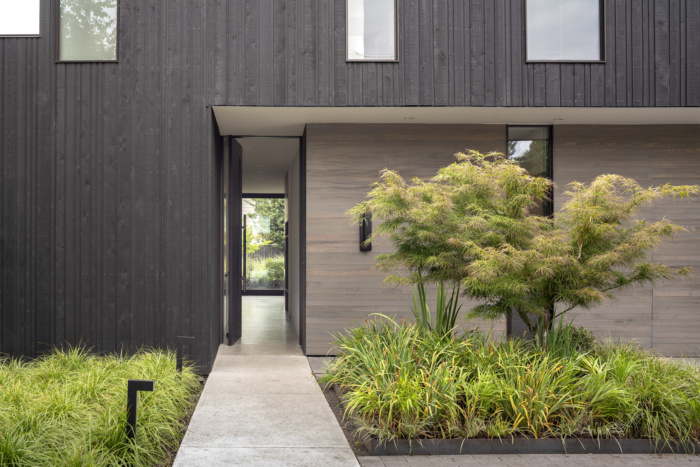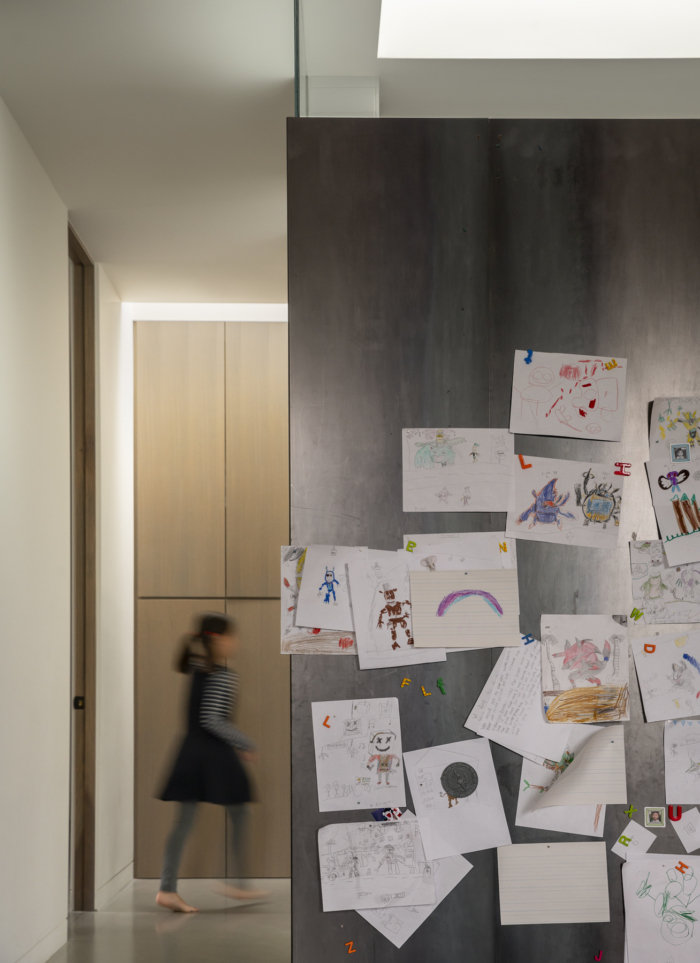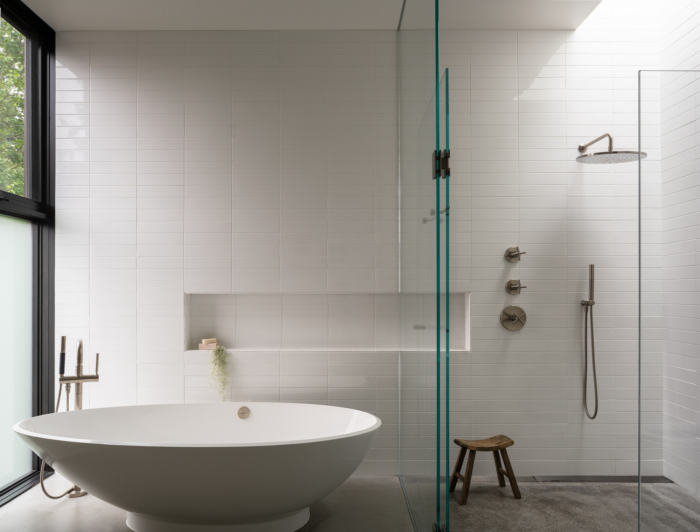Yo-Ju Courtyard House
Wittman Estes looked inward instead of outward in the design of the Yo-Ju Courtyard House, a private single family dwelling amongst the growing density of Clyde Hill, Washington.
What happens to the suburban single-family home as cities become dense and privacy becomes limited? It must look inward. Through a series of thresholds from opaque to transparent, Yo-Ju Courtyard House, which means “secluded living” in Mandarin Chinese, embraces the future of suburban density by establishing a private experience despite being adjacent to a busy arterial street in the Clyde Hill neighborhood of Bellevue.
Home to an active family with three young children, the architects addressed the challenges of future density—the danger of increasing traffic with playful children, noise pollution, and decreased amount of natural vegetation—by having the house look inward instead of outward. The house draws upon the traditions of “Chinese courtyard and garden design, along with the ideas underlying Chinese landscape painting techniques, to rethink the traditional single-family home” says architect Matt Wittman.
The design is organized in three elements: 1) the entry courtyard, which is screened from busy NE 24th Street; 2) the house living volume, which presents an opaque facade to the street, and a transparent facade to the rear; and 3) the garden courtyard, which is composed of a secluded zone in the rear yard where children can play freely. The courtyard house connects space with nature. The entry courtyard functions as a threshold between the street and the interior. A black-stained, tight knot cedar fence marks the next transition as a concrete path moves through a bed of grasses and a Japanese Maple tree. Inside the secluded garden courtyard, all signs of urban life disappear within the oak casement of the kitchen, concrete flooring, and floor-to-ceiling sliding doors.
By creating the illusion of large spaces that seamlessly transition to outdoor views, the house used one third less of a footprint than was allotted. Chinese landscape paintings employ a “atmospheric perspective” technique to enhance the perception of depth of space. Yo-Ju uses this technique to create “visually larger spaces than what actually exist—the eye marks the level of oak stairs, then the large sliding doors, finally reaching the garden courtyard beyond,” says Matt Wittman. This spatial efficiency help shape a new model for suburban housing—a decreased footprint that allows for maximum energy savings and increased planting area, privacy, and views into nature.
Design: Wittman Estes
Design Team: Matt Wittman, Jody Estes, Ashton Wesely
Photography: Andrew Pogue

























